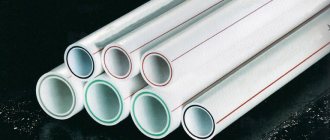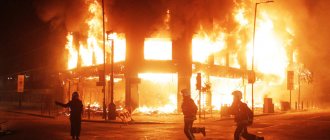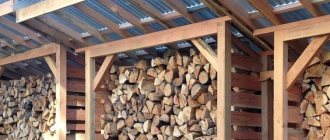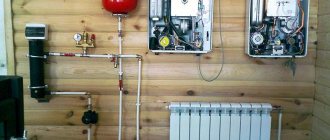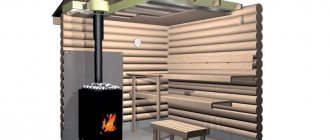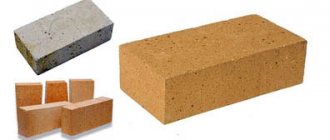The most important thing in a bathhouse is the spirit. Without spirit, the bathhouse turns not into a full-fledged ritual, but into everyday life, into a banal washroom, which essentially has purely hygienic purposes. And good spirit is ensured, among other things, by firewood for the bathhouse. In this business, everything is important, everything matters. And the type of wood and the time of harvesting and storage conditions. Do you have any doubts? Then read this article.
What kind of firewood is needed for a sauna stove?
The question of which firewood is best for a bathhouse is not entirely correct. Many practicing bathhouse attendants claim that all the talk about some special aroma of certain types of wood is akin to the tales of a freelance consultant in some mediocre store selling consumer electronics. “And why, may I ask, is this washing machine better than that one? And it washes clothes more delicately, leaving clothes 27% more delicate and softer than our direct competitors.” Let’s not be like idle storytellers, but let’s start with the main thing, with the basic consumer qualities of wood fuel.
Calorific value
This indicator indicates how much thermal energy is generated when burning a reference amount of wood fuel, all other things being equal. A simple observation shows that this indicator largely depends on the specific gravity of the wood. That is, the denser it is, the higher the calorific value can be expected from it.
In order not to be unfounded, we present a comparative table reflecting these parameters:
| Wood type | Specific density, kg/cu.m. m at 20% humidity | Heat of combustion kW/h per 1 cubic meter at 20% humidity | Heat of combustion kWh/kg |
| Birch | 650 | 1900 | 4,3 |
| Beech | 670 | 2200 | 4,2 |
| Oak | 690 | 2100 | 4,2 |
| Spruce | 445 | 1700 | 4,4 |
| Cedar | 435 | 1700 | 4,4 |
| Maple | 690 | 1900 | 4,1 |
| Linden | 445 | 1500 | 4,3 |
| Larch | 660 | 1700 | 4,4 |
| Alder | 520 | 1500 | 4,1 |
| Aspen | 495 | 1450 | 4,1 |
| Pine | 500 | 1700 | 4,4 |
| Ash | 680 | 2100 | 4,2 |
Presence of resinous inclusions
The content of resin pockets in solid wood is of fundamental importance when solving the problem of what kind of firewood to heat a bathhouse with. It is the combustion of tree resin that leads to increased formation of solid volatile substances, which provoke the appearance of soot plugs in the smoke ducts. In addition, when using a flow-through heater, smoke with a high soot content contributes to the deposition of soot on the stones, and subsequently, when steam is supplied, it lifts it into the atmosphere of the steam room, threatening the formation of hard and heavy steam.
Ease of sawing and splitting

When preparing firewood yourself, you should pay attention to this parameter. For example, white acacia, which is very common in the steppe zone, has a very high calorific value, however, dense and viscous wood, which has many plexuses of fibers, makes the process of chopping firewood a real test for the endurance of tendons and fortitude, and in some, especially heavy ones cases, and the degree of proficiency in profanity. Again the opposite example. Having high strength, oak splits well along the grain.
Requirements for storage conditions
Very often a situation arises when firewood is purchased or prepared for future use and with a large supply. In this case, you always need to consider the situation to what extent the wood is susceptible to rotting processes over a long period of storage. The best preserved trees are oak, alder, larch and ash. Species such as linden, willow, poplar and aspen must be used as quickly as possible and first.
Contraindications
Bath procedures are contraindicated in case of exacerbation of asthma and infectious diseases. Also, you should not visit the steam room if you have epilepsy, severe pathologies of the liver and heart, elevated temperature, high blood pressure, inflammation of internal organs, and pregnant women with pathologies.
How to properly store firewood?
It is not enough to purchase high-quality firewood - you must know how to properly preserve it in a condition suitable for bath use for as long as possible. Before storing any wood, it must be properly prepared, as well as the place for it.
Video: what kind of firewood can be considered “correct”
The place for sauna fuel should be located in close proximity to the bathhouse, or better yet, even under the same roof as it. It is recommended to do this so that the firewood is at hand when burning.
It is convenient if the woodshed is located directly next to the bathhouse
- If the tree for firewood has recently been cut down, and therefore is still damp, you need to give it time to dry. The wood brought in early spring should lie in a space free for air circulation all summer, and only closer to autumn can it be sawed and chopped into logs.
- In order for the dried firewood to remain in this state all the time, you need to take the following steps:
— for storage, you need to build a woodshed that would be ventilated from all sides and have a reliable wide roof;
- this structure is installed in a place where water does not collect and moisture vapor does not accumulate, that is, if possible, on a hill;
- if the woodshed is not built, you can stack the logs in neat rows, but in such a way that they are well ventilated, and cover the top with slate or other waterproof material.
When laying logs, it is necessary to ensure free passage of air between them
It is also necessary to take into account that winter firewood dries much faster than spring or summer firewood. For the latter, it is necessary to allow at least eight months for drying. In addition, you need to take into account the weather conditions under which the wood will dry.
After the firewood is dried, sawn and chopped, it should lie in bulk for some time in the open air. Then they need to be folded correctly.
- If firewood is stored outdoors, it is imperative to lay trellises under it, which are long pipes, small-diameter tree trunks or bricks. They are needed to ensure that the firewood does not lie on the ground and does not absorb moisture from it.
- On the sides of the future woodpile, vertical trellises made of pipes are installed, which will support the stack of firewood from the sides.
- If the woodpile consists of two or more vertical rows, then each subsequent row is installed with a slight slope to the previous one.
- Sometimes the logs are not laid in straight rows, but in various interesting shapes, which become a decoration of the site. For example, these include such forms as “stack” or “house”, “pyramid” or “mushroom”.
Video: an original way to fold a woodpile into a “stack”
In order to quickly and easily heat a stove in a bathhouse, and at the same time receive healing and disinfecting aromatic steam from it, you need to be especially careful when choosing firewood, prepare it well and store it properly. And to do this, you need to understand at least a little about the specific characteristics of different types of wood.
What kind of firewood should not be used?
There is a list of prohibitions and restrictions on the use of certain types of wood fuel. In other words, what firewood is best not to use for a bath:
- Elements of sleepers, posts, supports, protected from rotting by impregnation with creosote. The combustion of such fuel provokes the release of harmful volatile substances.
- Remains of wooden building structures treated with paints and varnishes. In addition to increased soot emission, such combustion is harmful for the reason stated in paragraph 1.
- Rotten wood, because, in addition to its low calorific value, it is prone to increased smoke formation.
To a limited extent or in combination with other firewood, you should use:
- Damp firewood, for obvious reasons.
- Young oak wood, due to its low calorific value.
- The wood was eaten due to its tendency to “shoot”, scattering burning embers.
- Larch wood, which has an excessively large number of knots “nails”, burns extremely unevenly, compared to pure wood.
- Wood of fruit trees, primarily plums, with a rotten core, which has a tendency to “ragged” combustion.
A bathhouse in the house is less comfortable than a free-standing one
This point practically eliminates the only tangible “plus” of a built-in bathhouse. Well, yes, you won’t have to go into the house with a wet head in the cold, and for some this will probably be worth a lot; but how many unpleasant “buts” appear here!
- “But” No. 1: a separate bathhouse is always more comfortable. There you can provide a spacious relaxation room, a more comfortable steam room, and a pleasant nook for storing firewood.
- “But” No. 2: a separate bathhouse is always more private. There is less risk that you will catch the eyes of guests and household members when you jump from the steam room into a snowdrift or into a swimming pool.
- “But” No. 3: in a separate bathhouse we don’t disturb anyone!
My bathhouse starts at 6 pm and lasts until 1-2 am (guests). And this is inevitable noise. And again, after the steam room, where can you go to sit and drink tea?
Features of using different types of firewood
Well, now let’s move on to the question of what kind of wood is best to heat a bathhouse and why:
- Oak is rightfully considered one of the best for a bath attendant's stoker. Mature oak wood splits well into easy-to-use blocks, gives an even, stable flame, and leaves abundant heat. It stores well in standard woodpiles and dries quickly under natural conditions. The English, who do not understand baths as well as they understand oatmeal and fireplaces, claim that oak logs really have a wonderful spicy aroma. In general, there is every reason to consider oak as royal firewood, and after that, how to heat a bathhouse with wood, and not with oak;
- Alder is slightly inferior to oak in the hierarchy of the sauna stoker, and can rightfully be called “prince”. By the nature of combustion, such firewood is similar to oak, and, oddly enough, is also endowed with a peculiar aroma. Moreover, in the Russian North it was believed that the smell of alder firewood lasts for 3 years in an open woodpile, and up to 5 years in a closed woodpile;
- Birch, the real “princess” of the wood kingdom. Moderately resinous wood burns well, and very resinous birch bark is perfect when you have to decide how to properly light a stove with wood. Birch is especially good for heating a black bath; birch tar, saturated with phytoncides, makes the steam room sterile to the state of a mediocre hospital operating room;
- Linden, a strong middle peasant, although according to ancient legends, the prince’s warriors, wounded in battles, were nursed in a bathhouse heated with linden wood. Some bathing gourmets attribute some special honey spirit to linden wood, which has an unheard-of therapeutic effect;
- Aspen is not very respected by stokers due to its low calorific value, rapid burnout and “liquid” heat, as they aptly put it. However, aspen is useful for heating the stove after long-term use of high-resin firewood. How to properly heat a stove with coniferous wood? If rationally, then burning soot with aspen wood;
- Pine, spruce, larch are used in sauna stoves, but by and large, when there is no particular alternative. Yes, and the smoke of conifers sometimes tastes very bitter;
- Fruit trees provide excellent firewood and, in regions where horticulture is developed and there is a rotation of commercial areas, serve as excellent fuel. Ripe cherries, apricots, pears and apple trees are especially good in a sauna oven. Here the aroma is good and the quality of the flame is high.
A bathhouse in the house is a constant risk of excess moisture
Good architects always try to dissuade the developer from the dubious and, to put it bluntly, very hemorrhoidal “bathhouse in the house” solution, also due to emerging architectural and construction restrictions. Everything needs to be designed, calculated and built in such a way as to avoid excessive moisture, otherwise we encounter condensation even in the residential area.
This is an eternal struggle against steam and mold! The bathhouse is always a separate building!
A built-in bathhouse several times increases the risk of the insulation in the walls and roof getting wet. And this is a very expensive risk, because when doing a vapor barrier, you will need to do a very inexpensive test for air permeability (blower door), and not only in the bathhouse, but throughout the entire house.
Lower door test? In our region it costs 300-350 euros per time.
Rules for using firewood in a sauna stove
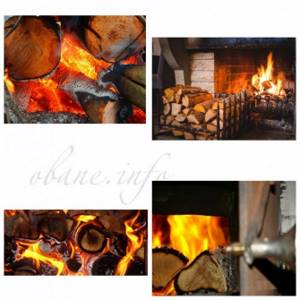
The correct process of lighting a sauna stove involves periodic visual inspection of the stove for the appearance of defects that may affect its performance. Therefore, before lighting the stove:
- We check the stove body and smoke duct for cracks. Identified defects are eliminated by cutting and filling with a repair heat-resistant composition.
- We control the tightness of the fit of the firebox doors and the vent to the opening. It is worth noting that an open firebox of a stove reduces its energy efficiency by 37 - 42%, and a 3 mm thick gap between the door and the door frame by 7 - 8%. One of the reasons for the occurrence of gaps is the manifestation of thermal deformation of the metal, which is exposed to high temperatures. To eliminate this phenomenon, the door is unpinned from the awnings, the protruding parts are dismantled and straightened on a hard hard surface with careful but confident blows with a 3-4 kg baldichka. The straightness of the plane is checked on any testing surface, for example, a sheet of glass or plastic of a suitable size.
- We inspect the grate for the passage of convection slots and the ash pan, which should be free from combustion products of previous fireboxes.
- For those who are concerned not only with the question of how to heat a stove with wood, but also how to do it effectively, it is worth making it a rule to periodically, at least 2-3 times a year, clean the chimney of soot deposits. This is especially true if the firebox is made with coniferous wood. It is worth remembering that a soot cake with a thickness of 3 - 4 mm can reduce the energy efficiency of the furnace by up to 18 - 20%.
- An extremely important point is the quality of the firewood. The most rational period for collecting firewood is the second half of December, all of January and the first half of February. It is during this period that the sap flow stops, and the moisture freezes out under the influence of negative temperatures. Naturally, this rule also applies to dead wood, although there is no sap flow there. The moisture content of freshly cut wood ranges from 48 to 52%; for trunks grown in wetlands it can exceed 55%. During 12 months of drying under natural conditions, humidity is reduced to 20%. And This is an indicator of the standard humidity of dry commercial firewood.
A few words about how to light a stove with raw wood. In fact, using raw firewood is fraught with a number of troubles. This is due to the low calorific value of such a material, active evaporation and condensation of moisture, and increased formation of solid volatile substances in combustion products.
A word from Experienced! The taiga hunters and fishermen of the last century had a technique that allowed them to partially solve the problem of how to light the stove with damp firewood and use the damp firewood in the logs. Before burning, they were generously sprinkled with coarse table salt. Salt pulled moisture out of solid wood and facilitated the combustion process
Now, let’s move on directly to describing the process of how to heat a stove with wood:
- At the bottom of the installation we place paper, birch bark or dry grass. We lay out the wood chips on it, and top the stacking with several large logs. The optimal cross-section of firewood for the main firebox is 90 - 110 mm. The logs can be laid in a row or crosswise; the main rule is to ensure the permeability of the laying by leaving air gaps of about 10 - 15 mm. It is better to place the installation itself closer to the fire door than to the rear wall of the firebox. As the fire flares up, the epicenter can be shifted closer to the center of the combustion space. The stacking height should not exceed 2/3 of the total height of the firebox. This will allow better and more efficient use of fuel without releasing energy into the chimney;
- Before ignition starts, the combustion door is open, the ash door is closed, the view and chimney dampers are open;
- As the initial filling is completely engulfed in flames, the combustion door closes and the ash door opens;
- The licking of flames into the chimney channel, accompanied by a characteristic hum, just like the light color of the flame, is a sign of strong draft, which is reduced by closing the ash door. The color transition of the flame rim from yellow to red and the abundant release of dark smoke from the chimney are a sure sign of a lack of oxygen for proper combustion due to lack of draft. We immediately open the ashpit;
- It is better to stir the stack with a poker when the firewood is more than half burned;
- The end of the firebox is completed by raking the heat into one place in the middle of the firebox and covering the vent and valve until combustion stops completely.
Important! It is impossible to completely block the access of oxygen through the blower and the outflow of flue gases through the smoke duct and chimney. This is fraught with the formation of carbon monoxide or carbon monoxide, a very insidious and dangerous enemy of all living things.
How to light a stove with raw logs?
Kindling stages:
- Chop the raw logs into slivers.
- Place them together to form a cone.
- Place crumpled paper or shredded bark inside.
- Open the furnace vent to maximum.
- Light a torch and use it to light paper or bark.
- Open the blower door to maximum.
The stove needs to be melted with wood chips for 15 minutes. After this you can add small sticks. Logs are added when there are enough coals and the walls of the oven are warmed up. To speed up the kindling, it is recommended to use a liquid ignition composition.
To ensure that moisture leaves the wood faster, raw logs must first be sprinkled with salt. Wait 10–15 minutes, clean off the salt. After this, you can start lighting the stove.
If wood is stored outdoors, logs or hemp should be laid out in rows so that adjacent rows do not touch each other. They should be located under a canopy. The edges can be covered with thick plastic film to protect from slanting rain.
